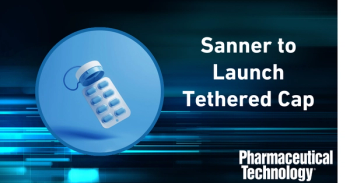
Exploring the Future of Outsourcing with Sarah Stevens (DCAT Week)
Sarah Stevens, senior vice-president and head of Drug Product Development & Manufacturing at Quotient Sciences, discusses various facets of the modern outsourcing industry.
Sarah Stevens, senior vice-president and head of Drug Product Development & Manufacturing at Quotient Sciences, sat down with Grant Playter, associate editor, to discuss various facets of the modern outsourcing industry.
Sarah, thank you so much for taking time to speak with us today.
Sarah Stevens: Thank you very much.
What are some of the latest drug developments in the larger biopharma industry? How is Quotient looking to capitalize on them?
Stevens: Sure, we see across our customer base and our network, really, trying to double down and find ways to accelerate on the drug development pathway. And we see that from the larger pharma companies through to some of the smaller biotech, you spin out to establishment. So, for Quotient, this aligns well to our core strategy of eliminating the whitespace and operating in a more disruptive nontraditional drug development approach.
So, we have our platform technology, which is translational pharmaceutics. And this essentially captures our ability to accelerate along the drug development pathway, really integrating our formulation development, clinical manufacturing, and dosing in our own in-house clinics, in a really accelerated and real time fashion.
Can you tell me a little bit more about the platform? What sort of use cases have you been using it?
Stevens: Translational pharmaceutics, as a concept, has been utilized by Quotient Sciences now for over 15 years; we have conducted over 400 clinical studies that have been designed in this way. For us, it really comes down to, as I say, having the in-house capability from that early formulation development.
Drug substance manufacturing is the latest addition to our capability portfolio, really building knowledge of a molecule and using that to guide the drug development approaches. So, we can rapidly reduce time and therefore, significantly reduce cost for our customers by essentially adopting this make dose test approach. And we know it's kind of a real time response, that we can adopt gathering data on humans, as opposed to animal models to inform those decisions.
What are some of the considerations that go into developing your company's overall drug development plan?
Stevens: For us, we tend to develop our strategy very much in response to what we see as a need for our customer – less of of a “build it and they will come” and much more responding and evolving as we work with a whole kind of spectrum and range of customers. And so, one of the key recent developments for us was the introduction of drug substance manufacturing, with some real strength around materials characterization. What that has allowed us to do is expand that translational pharmaceutics offering, really capturing the customer's needs much earlier in that process. And again, it just allows us to build that molecule knowledge and develop a real pathway for our customers.
In addition to that, we've expanded in recent years across into the US market, and of course, originated in the UK and Nottingham. And has grown considerably over recent years and introducing the translational pharmaceutics concept into the US market also.
Are there any special considerations that can be made for the orphan disease product development, given scarcity relative to more common conditions like say diabetes or whatnot? How does this affect that manufacturing process?
Stevens: Yes. it’s funny. For orphan indications, typically there may be a smaller target patient population. Some of the accelerated regulatory progression that you see with orphan or other fast track indications fits very well, actually, with what I've described around translational pharmaceutics and the fact that we can accelerate, we can be nimble, and as far as the manufacturing piece goes, we can work at very small scale. So essentially, very much I can give material speeding approach, which in turn saves money for the customer. It allows us to be very nimble in that make and dose approach that I've described.
How do you promote manufacturing agility at Quotient?
Stevens: It's interesting. So again, it's dependent on customer needs — we operate at a range of different scales across different facilities within the business. So we can very much adopt a GMP, small scale manual approach — perhaps you're only looking for a small number of tablets, small number of capsules, all the way through to several kilogram scale batch sizes across our facilities from the UK and the US. Regardless of scale, we adopt operational excellence, lean manufacturing approach, and really drive a kind of continuous improvement, culture and strategy around all of our manufacturing operations.
How would you evaluate the current state of the broader biopharma market? Are there any technologies or practices you're keeping a close eye on?
Stevens: Recent years have been fairly disruptive, I think —we see the kind of the aftermath, the learnings from COVID and a lot of focus on more advanced medicines, whether that be the mRNA space, lipid nanoparticles, more advanced drug delivery systems to support these peptides and proteins. So, certainly a lot of growth in the biologics side. We also have some sterile manufacturing capability within Quotient Sciences, and that really plays to that part of the market, it’s probably an area of future growth for us. But, certainly seeing that trend around the more advanced biologics.
With regard to COVID, in America, we declared the state of emergency in March 2020, but it’s set to lapse in May. But I've been talking with many people throughout the DCAT week, and a lot of people talking about how disruption and supply chain is still here. And that just in time, while it may not be completely out, seems to be losing favor in lieu of on-shoring. What's your take on all that?
Stevens: It’s really interesting. I think that there certainly are some supply chain challenges, materials, supplies, whether it be coming from an engineering perspective all the way through to even supply capsule shells. I think that, in very general terms, that COVID has brought an acute focus to supply chain.
And again, it's all about planning, and maybe just in time isn't the right approach, and maybe it's thinking more carefully about forecasts, from a commercial manufacturing perspective, and just the materials management part of any business where you're dealing with businesses it CDMO spaces. I think we've got the attention that has been needed, and brought acute focus and a much clearer view. Planning has become all the more important.
Do you have any bold prediction about where we'll be five years from now? How about ten?
Stevens: Oh, my goodness. Thinking about it from the CDMO and pharmaceutical services perspective, I think we will see this continuing direction of travel towards offering a fully integrated end-to-end service. I think almost all CDMOs will be at least claiming to offer the kind of integrated, end to end, services, as well as some venturing into biologics to match the small molecule capabilities. And again, that advancement, as I mentioned, some of the more complex or advanced drug delivery systems, polymeric, nanoparticles, liposomes powders, all those things that play well, along with protein delivery. So, I suspect we'll see that continued momentum in that space.
For more of our coverage on DCAT in 2023, viewers can visit
Newsletter
Get the essential updates shaping the future of pharma manufacturing and compliance—subscribe today to Pharmaceutical Technology and never miss a breakthrough.




